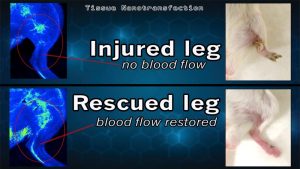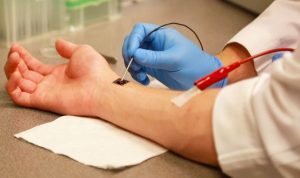Fingernail-sized chip can repair damaged tissue in seconds
 By Rachel England From engadget
By Rachel England From engadget
The non-invasive technology works without breaking the skin.
A new device can begin repairing damaged organs in seconds, heralding a major breakthrough for life-saving medicine. Developed at Ohio State University, the technology known as tissue nanotransfection (TNT) uses a small coin-sized silicon chip that “injects” genetic code into skin cells, converting them from one type to another.
Chandan Sen, PhD, holds a chip that could revolutionize medical care. In laboratory tests on mice at The Ohio State University Wexner Medical Center, the chip was able to heal serious wounds with a single touch by converting skin cells into vascular cells.
During the initial testing phase, researchers were able to reprogram skin cells into vascular cells on a mouse that had a badly injured leg with no blood flow. Within one week active blood vessels appeared around the leg and within two weeks the leg had been completely restored. A mouse that had suffered a stroke was also saved, suggesting this technology can be applied to organs and nerve cells, as well as tissue. It’s the first time cells have been reprogrammed in a live body.
This graphic shows the results of a breakthrough discovery called tissue nanotransfection. In laboratory tests at The Ohio State University Wexner Medical Center, researchers were able to heal the badly injured legs of mice in just three weeks, with no other treatments, simply by touching the legs once with a high-tech silicone chip.
The technology weighs less than 100 grams and has a long shelf life. It’s completely non-invasive — the genetic code is delivered by zapping the device with a small electrical charge that’s barely felt by the patient — and the procedure can be carried out without access to a lab or hospital. This means it will have a significant impact on the lives of those involved in medical emergencies where time is a crucial factor, such as car crash victims and soldiers injured in the field. It’s still waiting for FDA approval, but researchers expect testing on humans to start within the year.
IMAGES: OSU
For more on this story go to: https://www.engadget.com/2017/08/08/Ohio-state-genetic-device-breakthrough-organ-tissue-repair/







